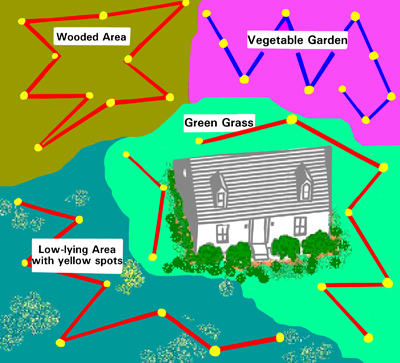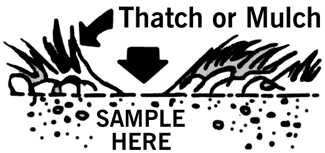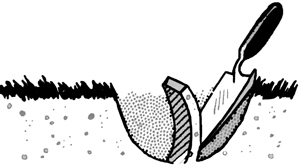Soil Analyses
Georgia clients are encouraged to visit their local Extension office for sample submission and consultation.
The Extension office will assist you with sampling, bottles, soil bags, and fees.
If you would like to submit samples directly to the lab:
1. Choose A Test And Fill Out A Form
Featured Tests
S1 (Routine Test)
pH, Lime requirement, Phosphorus, Potassium, Calcium, Magnesium, Zinc, Manganese
Fee: $6.00*
S2
Routine Test (S1) + Na, Fe, Cu, Cr, Mo, Ni, Cd, Pb + CEC (Cation Exchange Capacity) by Mehlich I sum, Percent Base Saturation
Fee: $12.00*
S6
Organic Matter (loss on ignition, LOI)
Fee: $10.00*
Soil Test Kit
Instructions, sample container, prepaid mailer, and submission form are all included. Just collect a sample of your soil, fill out the submission form, and drop it in the mail.
Fee: $20.00*
*Additional shipping costs may apply
2. Collect A Sample
1. Sampling Locations
Map out the area where the plants are to be grown or are presently growing. This will help in record keeping and ensure that the soil is taken from throughout the entire area. Divide the area such that each soil sample represents one plant type or condition. An area that has been divided according to obvious differences in plant types, plant performance, soil types, and drainage is shown in Figure 1.
- Use a zigzag approach when taking samples. Collect 8-10 soil samples from each location (zone) as shown in Figure 1.
- For trees and shrubs, take soil samples from six to eight spots around the dripline of the plants.
 Figure 1. Area divided according to vegetation and soil characteristics. Yellow dots indicate sampling points.
Figure 1. Area divided according to vegetation and soil characteristics. Yellow dots indicate sampling points.2. Sampling Depth
The depth of sampling depends on the type of plants being grown.
- For lawns, sample to a depth of 4 inches.
- For gardens, ornamentals, mixed fruit trees, and wildlife plots, sample to a depth of 6 inches.
3. Sampling Time
Soil sampling should be done well in advance of planting or spring green-up. This allows adequate time for sample analysis, data interpretation, and fertilizer and lime application.
4. Sampling Tools
Use clean sampling tools and containers to avoid contaminating the soil sample. Never use tools or containers that have been used for fertilizer or lime. Collect samples with tools like trowels, shovels, spades, hand probes or hand augers.
5. Sampling Procedures
Clear the ground surface of grass thatch or mulch (Figure 2). Using a trowel, push the tool to the desired depth into the soil. Push the handle forward, with the spade still in the soil to make a wide opening. Then, as shown in Figure 3, cut a thin slice from the side of the opening that is of uniform thickness, approximately 1/4-inch thick and 2 inches in width, extending from the top of the ground to the depth of the cut. Collect from several locations. Combine and mix them in a plastic bucket to avoid metal contamination. Take about a pint of the mixed soil and place it the UGA soil sample bag. Be sure to identify the sample clearly on the bag and the submission form before mailing.
 Figure 2. Remove grass thatch or mulch before sampling.
Figure 2. Remove grass thatch or mulch before sampling. Figure 3. Soil sampling with a trowel.
Figure 3. Soil sampling with a trowel. Source: Soil Testing for Home Lawns, Gardens and Wildlife Food Plots
3. Deliver Your Sample
Samples should be air dried overnight. Dry samples on a flat surface lined with clean white paper. Take care to avoid contamination. After drying, transfer the sample to the soil sample bag and either bring it to your local extension office, or deliver it to our lab.
Soil Test Probes ($50/each):
- Email your order to [email protected], and make check payable to UGA.
- Send payment to:
Soil, Plant & Water Laboratory
2400 College Station Road
Athens, Georgia 30602-9105
Georgia clients: Locate Your County Extension Office
Out-Of-State Clients: Deliver your sample to our mailing address.
This number will connect you to the UGA Extension Office in the County where your phone is registered: 1-800-ASK-UGA1